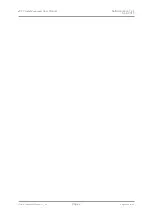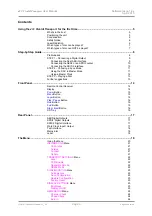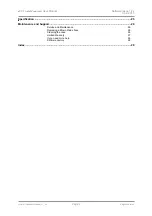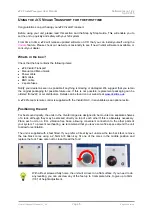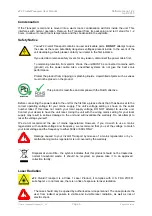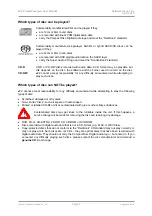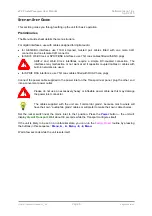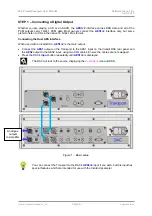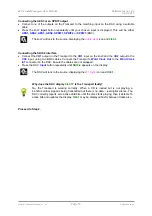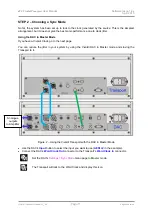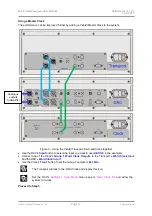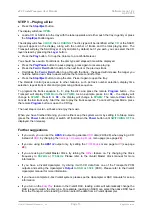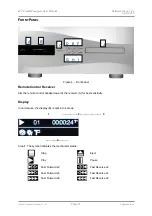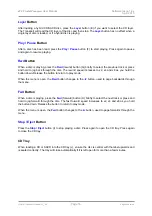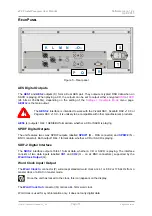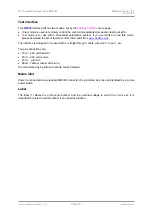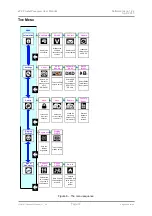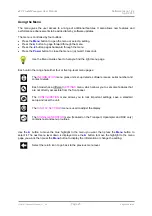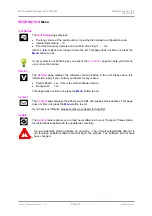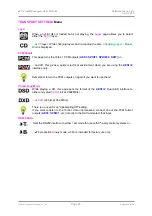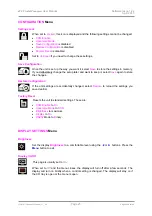
dCS Vivaldi Transport
User Manual
Software Issue 1.2x
April 2015
Vivaldi Transport Manual v1_2x
Page 8
English
version
1B
S
TEP
-
BY
-S
TEP
G
UIDE
This section guides you through setting up the unit for basic operation.
14B
Preliminaries
The Menu Guide sheet details the menu structure.
For digital interfaces, use with cables designed for digital audio:
•
for AES/EBU interfaces use 110
Ω
screened, twisted pair cables fitted with one male XLR
connector and one female XLR connector.
•
for SDIF, Word Clock or SPDIF BNC interfaces, use 75
Ω
coax cables fitted with BNC plugs.
!
SDIF-2 and Word Clock interfaces require a simple DC-coupled connection. The
interfaces may malfunction or not work at all if capacitor coupled cables or cables with
built-in networks are used.
•
for SPDIF RCA interfaces, use 75
Ω
coax cables fitted with RCA Phono plugs.
Connect the power cable supplied to the power inlet on the Transport rear panel, plug the other end
into a convenient power outlet.
!
Please do not use an excessively heavy or inflexible power cable as this may damage
the power inlet connector.
The cables supplied with the unit are “commercial grade”, because most owners will
have their own “audiophile grade” cables or will prefer to make their own cable choices.
Set the rocker switch near the mains inlet to the
I
position. Press the
Power
button – the unit will
display
Vivaldi Transport
. Wait about 30 seconds while the Transport configures itself.
If the unit is likely to be set in an unfamiliar state, you can run the
Factory Reset
routine by pressing
the buttons in this sequence:
Menu,
►
,
►
, Menu,
◄
,
◄
, Menu.
Wait a few seconds while the unit resets itself.


